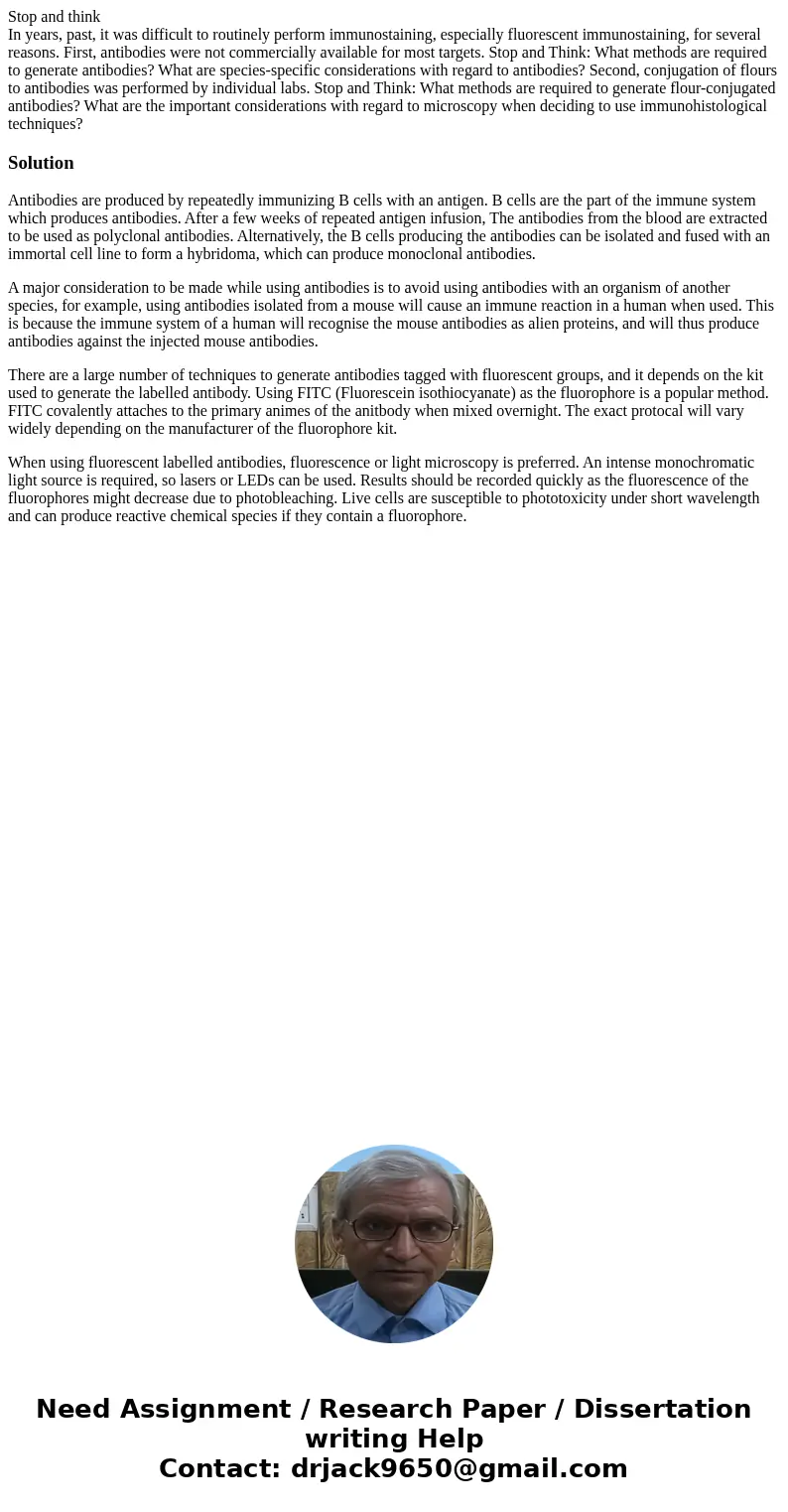Stop and think In years past it was difficult to routinely p
Solution
Antibodies are produced by repeatedly immunizing B cells with an antigen. B cells are the part of the immune system which produces antibodies. After a few weeks of repeated antigen infusion, The antibodies from the blood are extracted to be used as polyclonal antibodies. Alternatively, the B cells producing the antibodies can be isolated and fused with an immortal cell line to form a hybridoma, which can produce monoclonal antibodies.
A major consideration to be made while using antibodies is to avoid using antibodies with an organism of another species, for example, using antibodies isolated from a mouse will cause an immune reaction in a human when used. This is because the immune system of a human will recognise the mouse antibodies as alien proteins, and will thus produce antibodies against the injected mouse antibodies.
There are a large number of techniques to generate antibodies tagged with fluorescent groups, and it depends on the kit used to generate the labelled antibody. Using FITC (Fluorescein isothiocyanate) as the fluorophore is a popular method. FITC covalently attaches to the primary animes of the anitbody when mixed overnight. The exact protocal will vary widely depending on the manufacturer of the fluorophore kit.
When using fluorescent labelled antibodies, fluorescence or light microscopy is preferred. An intense monochromatic light source is required, so lasers or LEDs can be used. Results should be recorded quickly as the fluorescence of the fluorophores might decrease due to photobleaching. Live cells are susceptible to phototoxicity under short wavelength and can produce reactive chemical species if they contain a fluorophore.

 Homework Sourse
Homework Sourse